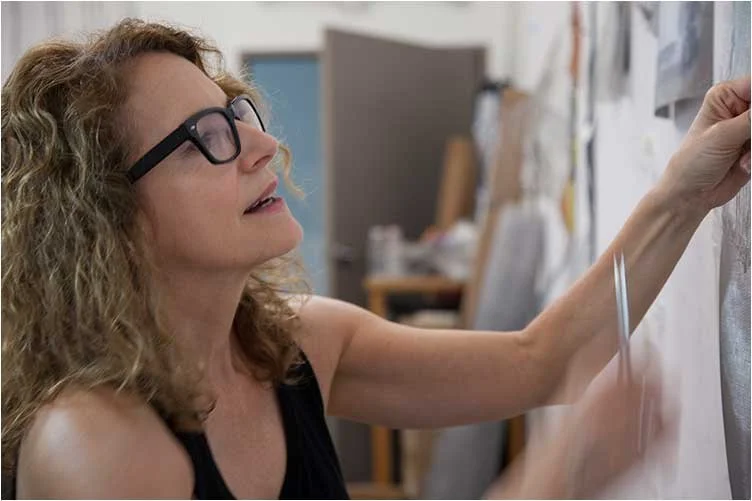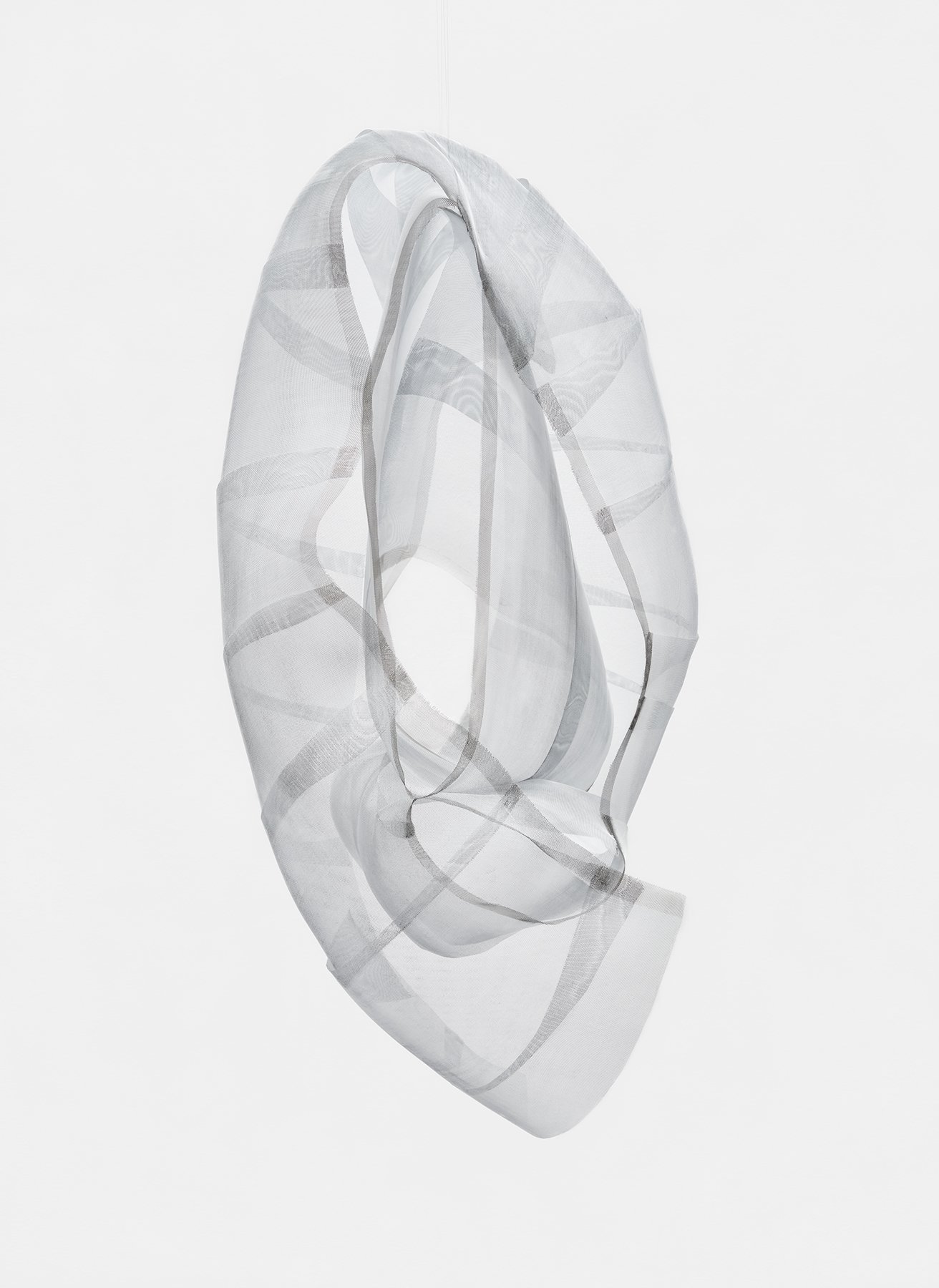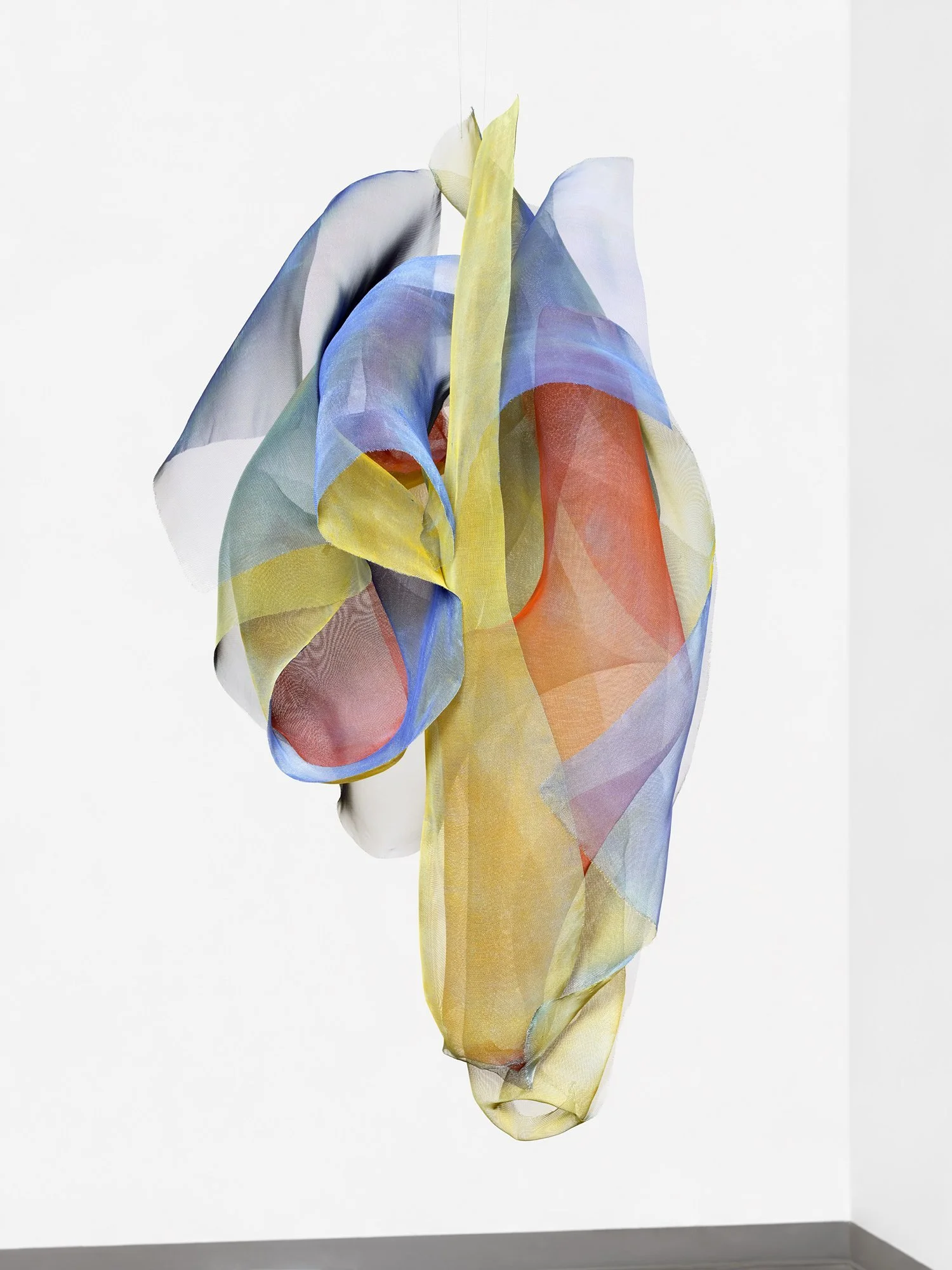Nancy Ivanhoe: Veiled Passages
LA based artist Nancy Ivanhoe is influenced by the California Light and Space Art Movement of the 60s/70s and her background in dance. She molds industrial screen mesh into transparent sculptures. Using sheets of industrial metal screen mesh, Ivanhoe paints, pushes, and pulls the mesh into sculptural forms that undulate and fold into lightweight color encasements that react to each other and filter the surrounding light.
How did your creative journey begin?
I lived in the Bronx during my childhood with a nearby grandfather who loved NYC and all it had to offer. Every Saturday we had a date to visit museums, zoos & Central Park. As we walked through the city, he would point out the skyline and surrounding architecture. The art museums were my favorite - he emphasized the importance of sitting on a bench in the center of the room to observe and absorb the art rather than quickly moving onto the next piece. Thanks to him, I became aware of color, light and form which I instilled in my early drawings and still carry into my present work.
Where do you find inspiration for your work?
I find inspiration from many sources, especially living in the thriving LA art community where I can exchange ideas with artists and stay current via ongoing exhibitions. My work has always been influenced by the California Light & Space art movement and since moving to LA, the bright southern California light and large expanse of the shimmering ocean have seeped into my work.
Dance is another source of inspiration. I danced through my childhood and into college and continue to feel a visceral response to dance performance. The sequence of movement, the fluidity and interaction of shape and form, and the contraction and expansion of breath are all evident in my sculptures. I’m presently working with an LA dance company that allows me to attend rehearsals and fill my sketchbook with potential ideas to explore.
How has your work evolved over the last few years?
I began graduate school at San Francisco Art Institute as a figurative painter exploring the form and movement of the human body. Once in school I never picked up a paint brush but became drawn to materials, such as scrap copper wire, that reacted to light and could be manipulated into forms and gestures of movement. Often, I drew their shadows with graphite, creating drawings on paper or on the walls in my studio. They became studies of light, form, and the passage of time. I moved to Los Angeles from San Francisco seven years ago and began working with industrial metal screen. It was a difficult time in my life, both politically and personally. I began to unravel the metal mesh as a metaphor – the unraveled filaments became 3-dimensional drawings resembling my earlier graphite drawings. As the pieces of mesh fell on top of each other, I became intrigued with the effect of light on the transparent forms, how their colors and shadows transitioned, and the moirés that moved as currents along the many faceted layers. I’m presently expanding this as a body of work and continue to explore new ways to approach this interaction of light, color, form, and the movement of moiré.
What does a typical day in the studio look like for you, and how has your art practice grown or changed?
I have a studio in Inglewood and thanks to LA traffic, it’s a podcast away. I begin my day in the early afternoon and leave the studio about 7pm. My favorite moment is opening my studio door and studying my work with fresh eyes. I then know how to move forward with each piece. I have found over the years that a short meditation allows me to begin with a clear mind. My studio is part of a community of artists and often we gather for lunch breaks and occasional studio visits.
Which experiences have impacted your work as an artist?
Graduate school gave me the confidence to explore unconventional art materials and expand my knowledge of previous artists who were part of a similar practice. Having waited many years to attend an MFA program, I was like a sponge soaking up as much information as possible and open to all the opinions and support the art community at San Francisco Art Institute offered. Another key experience occurred when I began to explore the moirés set off from layering the metal screen. On a trip to France, I decided to visit Lyon, known for their silk industry. The owner of one of the factories that specializes in moirés, gave me a personal tour, describing the many steps and processes that have been used for centuries to create silk moirés. I was able to transfer some of his process with silk to my metal material. But even with this knowledge, the moirés still hold a magical quality as their illusion of pattern move through my work.
How has social media impacted your work?
Social media allows me easy access to follow other artists and to connect to a larger community of openings, galleries, and museum shows. I also enjoy spending time viewing the performance of my favorite dance companies on video and photos, both of which inspire my work.
How does your process impact your work?
My work is process based. I visualize how I want the piece to develop but also accept it will not look like my early vision as I resolve it. I begin using sheets of screen mesh as a semi-transparent canvas. I paint, push, and pull the mesh into sculptural forms that respond to each other. Colors combine, such as red and yellow shapes that fuse into orange or enfolding sheer white layers that build into dense white forms. As in a dance, I manipulate their shapes to contract, expand and enclose. In my studio I hang my work from suspended rods. This allows me the ability to move around each piece, incorporate the moiré and shadow that activate from each location, and create veiled passages that open into cavities from different angles. Another aspect of my process questions when a piece is done. If it is in my studio, I have no qualms about re-entering a finished piece and making it into new work, in a sense, infusing it with new life.
Website: nancyivanhoe.com
Instagram: @nlivanhoe







